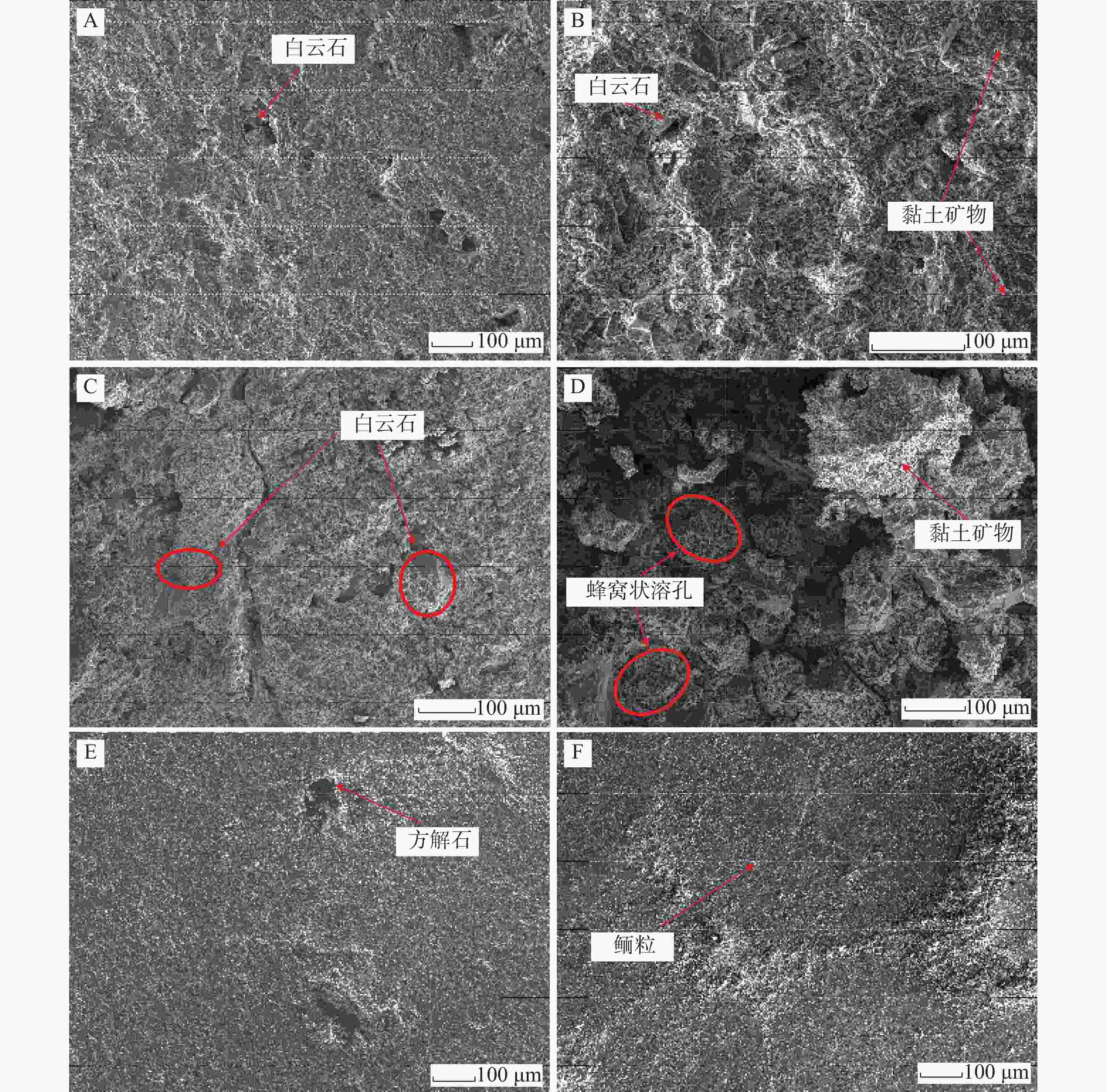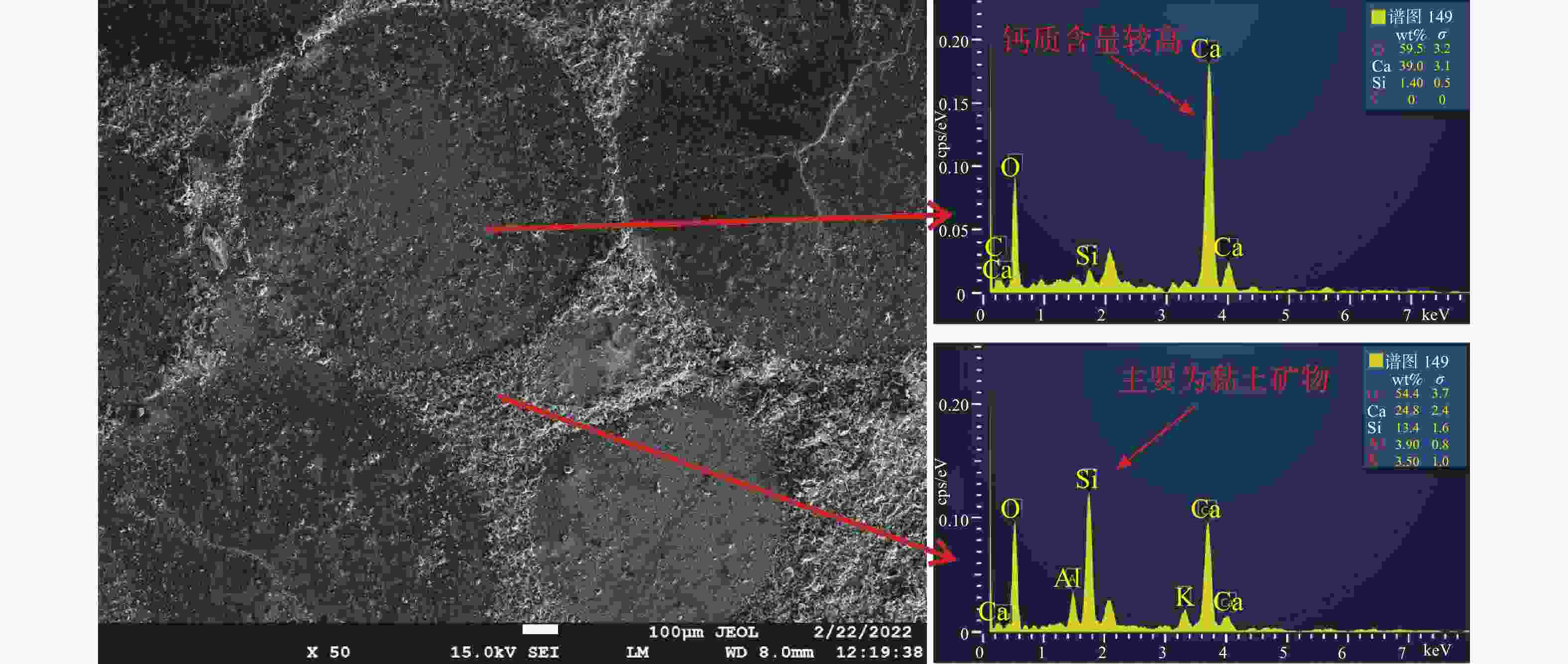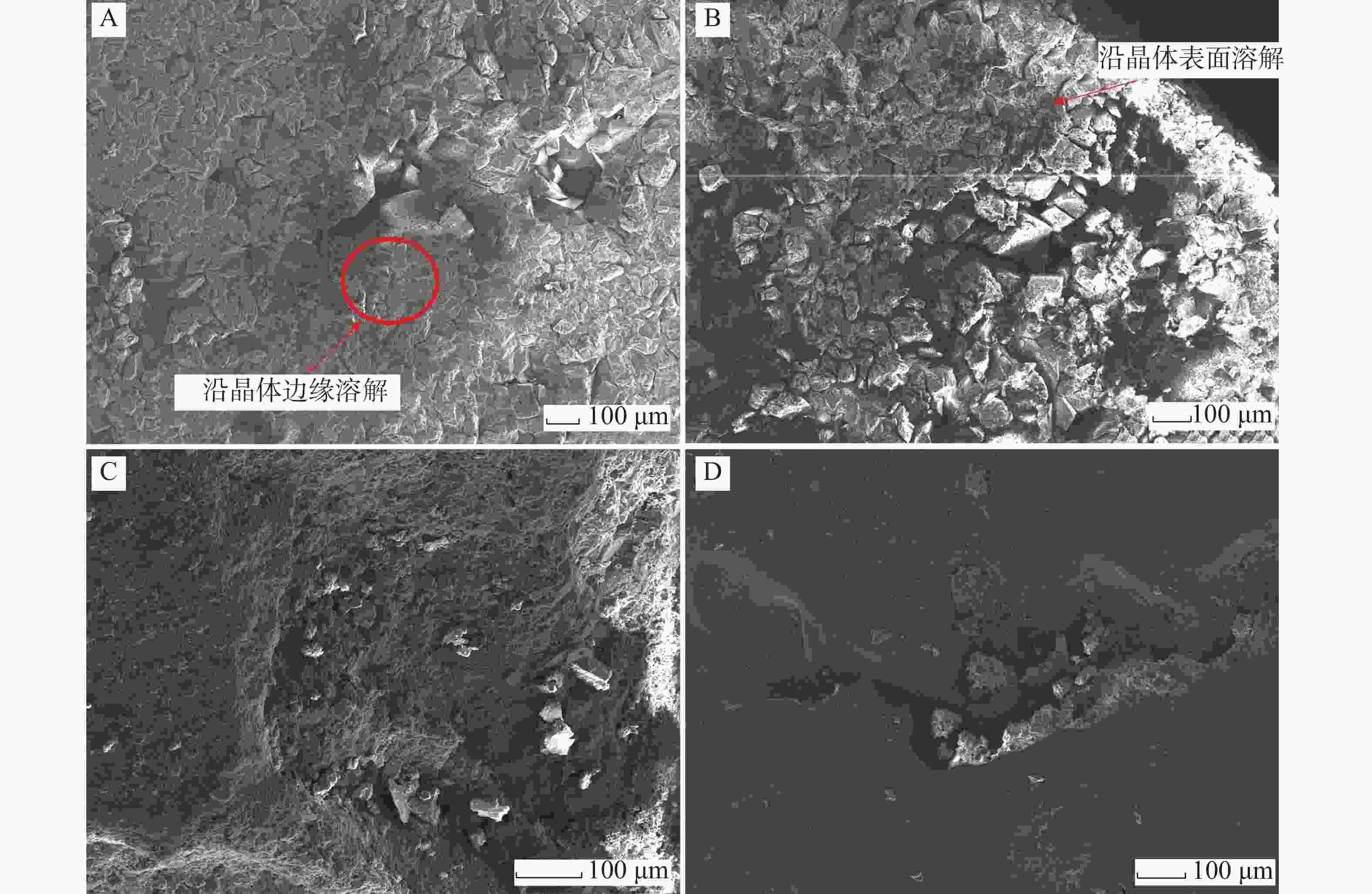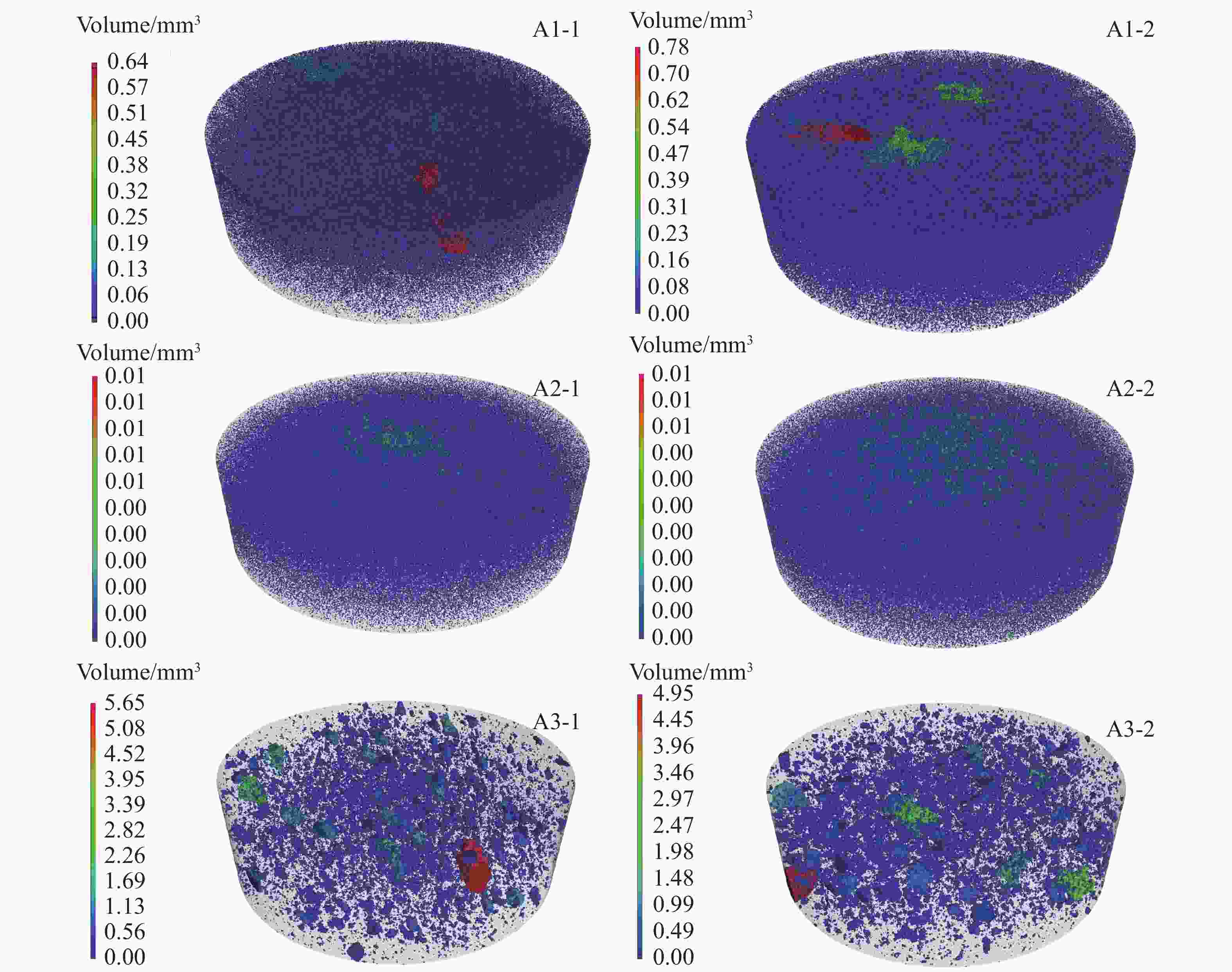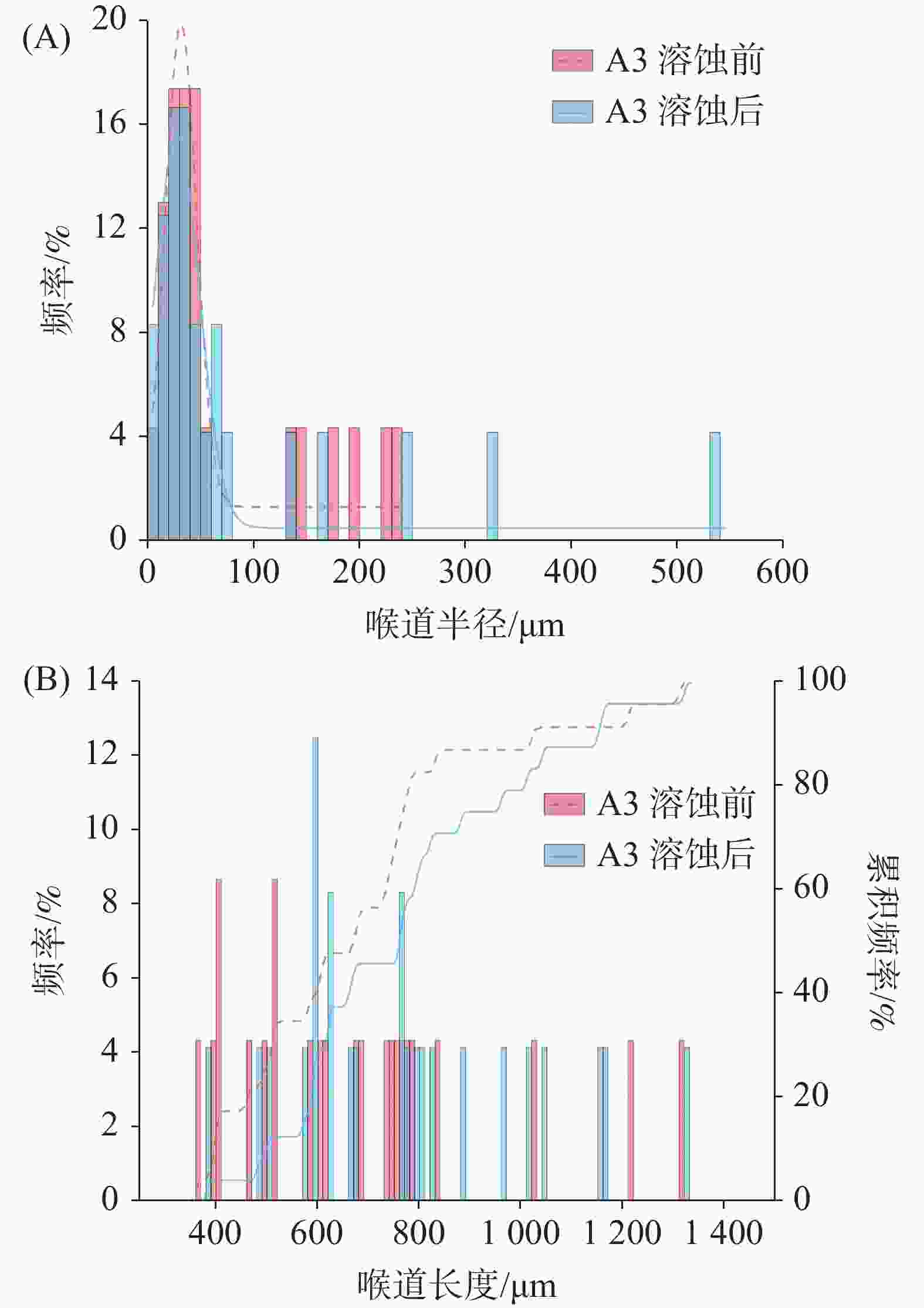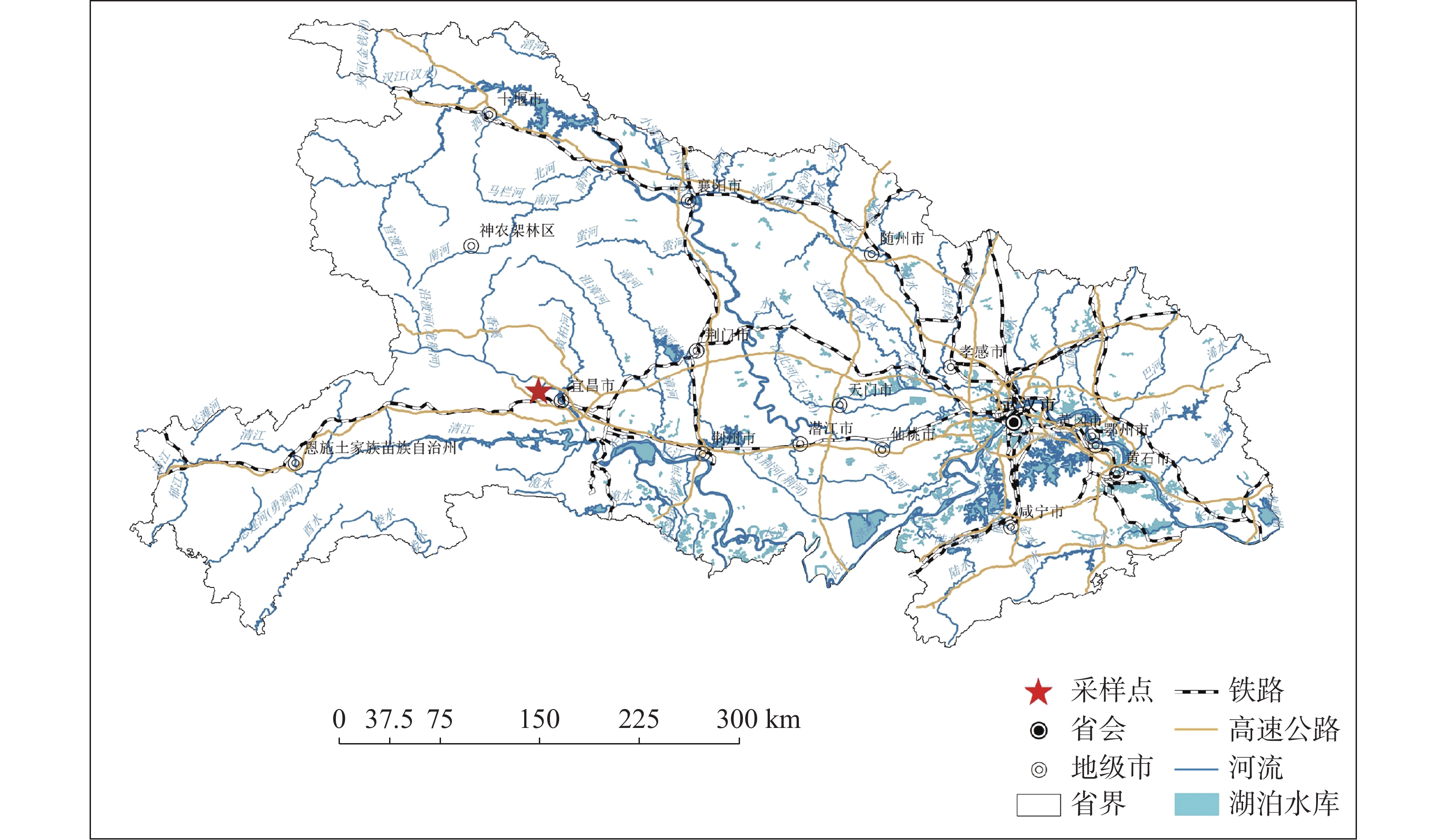Study on the microstructure and variation law of carbonate rock dissolution based on scanning electron microscopy and CT imaging technology
-
摘要: 为研究溶蚀作用下碳酸盐岩孔隙的演变规律及控制作用,文章选取三峡地区4种类型碳酸盐岩开展溶蚀实验。同时结合扫描电镜、CT成像对实验前后岩石的溶蚀特征及孔隙结构进行测试。结果表明:溶蚀总发生在低晶格能的矿物处且沿矿物晶体的菱形解理面以及薄弱部位发育,表现为对矿物和孔隙等结构的选择性溶解;碳酸盐岩的孔隙度对溶蚀过程影响较小,岩石的孔径大小是影响碳酸盐岩溶蚀速率的重要因素;小孔径岩石的溶蚀多在样品表面发育小型溶孔,大孔径岩石的溶蚀主要发生在孔隙隙壁且有向岩石内部溶蚀的痕迹;经溶蚀改造,孔喉半径和连通性均呈现出增长趋势。本研究对碳酸盐岩差异性岩溶作用机理及岩溶发育规律的认识有一定指导意义。Abstract:
The dissolution of carbonate rocks is the most important process of karst development, and it is also the basis for the processes affecting karst geomorphological evolution, hydrochemistry of karst water, karst water system development, karst carbon sinks and global carbon cycle. Scholars have explored the dissolution mechanism of carbonate rocks and the factors that affect the development of carbonate karst through indoor simulated dissolution and in-situ experiments, but they mostly focus on the effect of chemical components of rocks on karst processes. In field surveys, it was found that not only limestone formations, but also some dolomite formations have developed karst. It is not comprehensive enough to explain the solubility of carbonate rocks only by chemical composition. The pore structure of the rock also plays an important role,but the influence mechanism of rock pore structure on karst development is still unclear. In order to study the variation law and control effect of carbonate rock pores under dissolution experiment,in this paper, we selects four types of carbonate rocks (Sinian Dengying Formation-medium fine-grained dolomite, Cambrian Tianheban Formation-oolitic limestone, fine-grained limestone, and Qinjiamiao Formation-dolomitic breccia)in the Three Gorges area to carry out dissolution experiments. At the same time, scanning electron microscopy and CT imaging methods were used to test and analyze the dissolution characteristics and pore structure of rocks before and after dissolution reaction. The results show that, (1)The dissolution of carbonate rocks always occurs in soluble minerals with low lattice energy and develops along the rhombohedral cleavage planes and weak parts of mineral crystals,showing the selective dissolution of soluble minerals and pore structures. Dissolution preferentially dissolves soluble minerals, and insoluble components either fall off or protrude from the rock surface.Due to the control of rhombic cleavage on the surface of dolomite crystals, the dissolution will develop into dissolution fractures along the cleavage, and at the same time, dissolution pores appear on the surface of dolomite crystals, showing a "honeycomb" dissolution characteristic; Lattice defects, cleavage, and the weaker plasmonic and molecular contact forces at the edge of the crystal are the places where the dissolution preferentially occurs, and the dissolution strength at the rock pores is slightly higher than that at other parts. (2) The pore size of carbonate rocks controls the development of dissolved pores and the evolution of dissolved pores during rock dissolution.For oolitic limestone and fine-grained limestone samples, because their pore diameters are mainly concentrated in 18-80 μm and the pore distribution is uniform,after the dissolution reaction, the small pores further increased, only a small amount of pores were enlarged by dissolution, and the area with increased pore size was mainly concentrated in 40-50 μm,and the pores were mostly developed on the surface of the rock. The pores on the surface of the medium-fine-grained dolomite are relatively developed and the pore size is large, about 20% of which are larger than 100 μm, after the dissolution transformation, the proportion of pores with a pore size of more than 50 μm in the rock increased to 78%. It is shown that the dissolution of rocks with small pore size (40-60 μm) mainly occurs on the surface of the sample, and small dissolved pores are often developed. The dissolution of large pore size (>80 μm) rocks mainly occurs in the pore walls and there are signs of dissolution into the rock. After dissolution transformation, the pore throat radius and connectivity of medium-fine-grained dolomite show a certain increase. (3) The dissolution process of carbonate rocks is jointly affected by chemical composition and pore structure, and is less affected by rock porosity. The pore size distribution is the key factor affecting the dissolution rate of carbonate rocks. The porosity of the samples before dissolution is between 1.97 and 10%. Under the experimental conditions (20 ℃, 1 atm, 0.1 mol·L−1 HCl solution), the dissolution rate of carbonate rocks is between 0.497 g·d−1 and 0.598 g·d−1. The mass loss of dolomitic breccia through dissolution is the largest due to the influence of cement shedding; the medium-fine crystal dolomite with more developed surface pores and larger pore size is second;fine-grained limestone with dense grains and small pores has the slowest dissolution rate.Samples with smaller pore diameters are greatly affected by the stagnant boundary layer, and the dissolution medium is likely to form a local saturation state inside the pores; the samples with larger pore diameters can expand into the rock during the dissolution process of the "water-rock" reaction, which is affected by the stagnant boundary, but the effect of the layer is less and the water flow conditions are better than the small pore size samples, so the dissolution rate is higher. This study has certain guiding significance for the understanding of the differential karstification mechanism and karst development law of carbonate rocks. -
表 1 样品信息及实验结果
Table 1. Sample information and experimental results
编号 岩性 层位 矿物组成/% 孔隙度/% 比溶蚀率 方解石 白云石 其他 溶蚀前 溶蚀后 A1 鲕粒灰岩 Є1t 85.04 1.88 13.07 2.77 3.47 0.95 A2 细晶灰岩 Є1t 87.04 11.23 1.73 2.55 2.76 0.86 A3 中-细晶白云岩 Z2dn3 27.66 70.12 2.22 1.97 2.16 1.03 A4 白云质角砾岩 Є2q 10.59 27.27 62.14 1.16 -
[1] 张之淦. 岩溶发生学: 理论探索 [M]. 桂林: 广西师范大学出版社, 2006.ZHANG Zhigan. Origin of karst: Theoretical works on karst[M]. Guilin: Guangxi Normal University Press, 2006. [2] Mingming Luo, Hong Zhou, Yongping Liang, Zhihua Chen, Rubing Chen, Xinlong Li, Jakada Hamza. Horizontal and vertical zoning of carbonate dissolution in China[J]. Geomorphology, 2018(322): 66-75. [3] 袁道先. 碳循环与全球岩溶[J]. 第四纪研究, 1993(1):1-6. doi: 10.3321/j.issn:1001-7410.1993.01.001YUAN Daoxian. Carbon cycle and global karst[J]. Quaternary scineces, 1993(1):1-6. doi: 10.3321/j.issn:1001-7410.1993.01.001 [4] 韩庆之, 梁杏, 曾克峰, 张佑廷, 杨建宏. 碳酸盐岩可溶性室内研究[J]. 地质科技情报, 1998(S2): 102-106.HAN Qingzhi, LIANG Xing, ZENG Kefeng, ZHANG Youting, YANG Jianhong. Study on solubility of carbonate in door[J]. Geological Science and Technology Information, 1998(S2): 102-106. [5] 龚自珍, 李兆林. 峰峰地区碳酸盐岩溶蚀机理和岩溶发育特征[J]. 中国岩溶, 1992(3): 250-260.GONG Zizhen, LI Zhaolin. The dissolution mechanism and karst featurea of carbonate rocks in Fengfeng region[J]. Carsologica Sinica, 1992, 11(3): 250-260. [6] 翁金桃. 方解石和白云石的差异溶蚀作用[J]. 中国岩溶, 1984, 3(1):29-38.WENG Jintao. The differential corrosion of calcites and dolomite[J]. Carsologica Sinica, 1984, 3(1):29-38. [7] 韩宝平. 喀斯特微观溶蚀机理研究[J]. 中国岩溶, 1993, 12(2): 97-102.HAN Baoping. Study on micro-corrosion mechanism of karst[J]. Carsologica Sinica, 1993, 12(2): 97-102. [8] 朱文慧, 曲希玉, 邱隆伟, 陈勇, 龚发雄, 吴思萱. 盐酸及乙酸介质中的碳酸盐岩溶蚀表面特征及机理:以南堡凹陷为例[J]. 矿物岩石地球化学通报, 2015, 34(3):619-625. doi: 10.3969/j.issn.1007-2802.2015.03.018ZHU Wenhui, QU Xiyu, QIU Longwei, CHEN Yong, GONG Faxiong, WU Sixuan. Characteristics and erosion mechanism of carbonate in acetic acid and hydrochloride solutions, An example from the Nanpu depression[J]. Bulletin of Mineralogy, Petrology and Geochemistry, 2015, 34(3):619-625. doi: 10.3969/j.issn.1007-2802.2015.03.018 [9] 佘敏, 朱吟, 沈安江, 郑兴平, 贺训云. 塔中北斜坡鹰山组碳酸盐岩溶蚀的模拟实验研究[J]. 中国岩溶, 2012, 31(3):234-239. doi: 10.3969/j.issn.1001-4810.2012.03.002SHE Min, ZHU Yin, SHEN Anjiang, ZHENG Xingping, HE Xunyun. Simulation experiment for the dissolution of carbonate rocks of the Yingshan formation on the northern slope of Tazhong uplift[J]. Carsologica Sinica, 2012, 31(3):234-239. doi: 10.3969/j.issn.1001-4810.2012.03.002 [10] PENG Jun, WANG Xuelong, HAN Haodong, YIN Shen, XIA Qingsong, LI Bin. Simulation for the dissolution mechanism of Cambrian carbonate rocks in Tarim Basin, NW China[J]. Petroleum Exploration and Development, 2018, 45(3):431-441. doi: 10.1016/S1876-3804(18)30048-X [11] 郭绪磊. 基于SAC改进模型的岩溶流域降水: 径流过程模拟研究[D]. 北京: 中国地质大学, 2019.GUO Xulei. A case study on the simulation of precipitation and runoff process in karst basin based on modified SAC model[D]. Beijing: China University of Geosciences, 2019. [12] 韩宝平. 微观喀斯特作用机理研究[M]. 北京: 地质出版社, 1998.HAN Baoping. Study on micro karst mechanism[M]. Beijing: Geological Publishing House,1998. [13] 刘琦, 卢耀如, 张凤娥, 齐继祥, 张胜. 温度与动水压力作用下灰岩微观溶蚀的定性分析[J]. 岩土力学, 2010, 31(S2):149-154. doi: 10.16285/j.rsm.2010.s2.007LIU Qi, LU Yaoru, ZHANG Feng'e, QI Jixiang, ZHANG Sheng. Qualitative analysis of microcorrosion of limestone induced by temperature and hydrodynamic pressure[J]. Rock and Soil Mechanics, 2010, 31(S2):149-154. doi: 10.16285/j.rsm.2010.s2.007 [14] 聂继红, 韩宝平, 高澜. 碳酸盐矿物的微观喀斯特研究[J]. 分析测试技术与仪器, 1995(2):33-37.NIE Jihong, HAN Baoping, GAO Lan. Study on micro-mechanism karst of carbonate minerals[J]. Analysis and Testing Technology and Instruments, 1995(2):33-37. [15] John W. Morse, Rolf S. Arvidson. The dissolution kinetics of major sedimentary carbonate minerals[J]. Earth-Science Review, 2002, 58:51-84. doi: 10.1016/S0012-8252(01)00083-6 [16] 袁道先. 中国岩溶动力系统[M]. 北京: 地质出版社, 2002.YUAN Daoxian. Karst dynamic system of China[M]. Beijing: Geological Publishing House, 2002. -




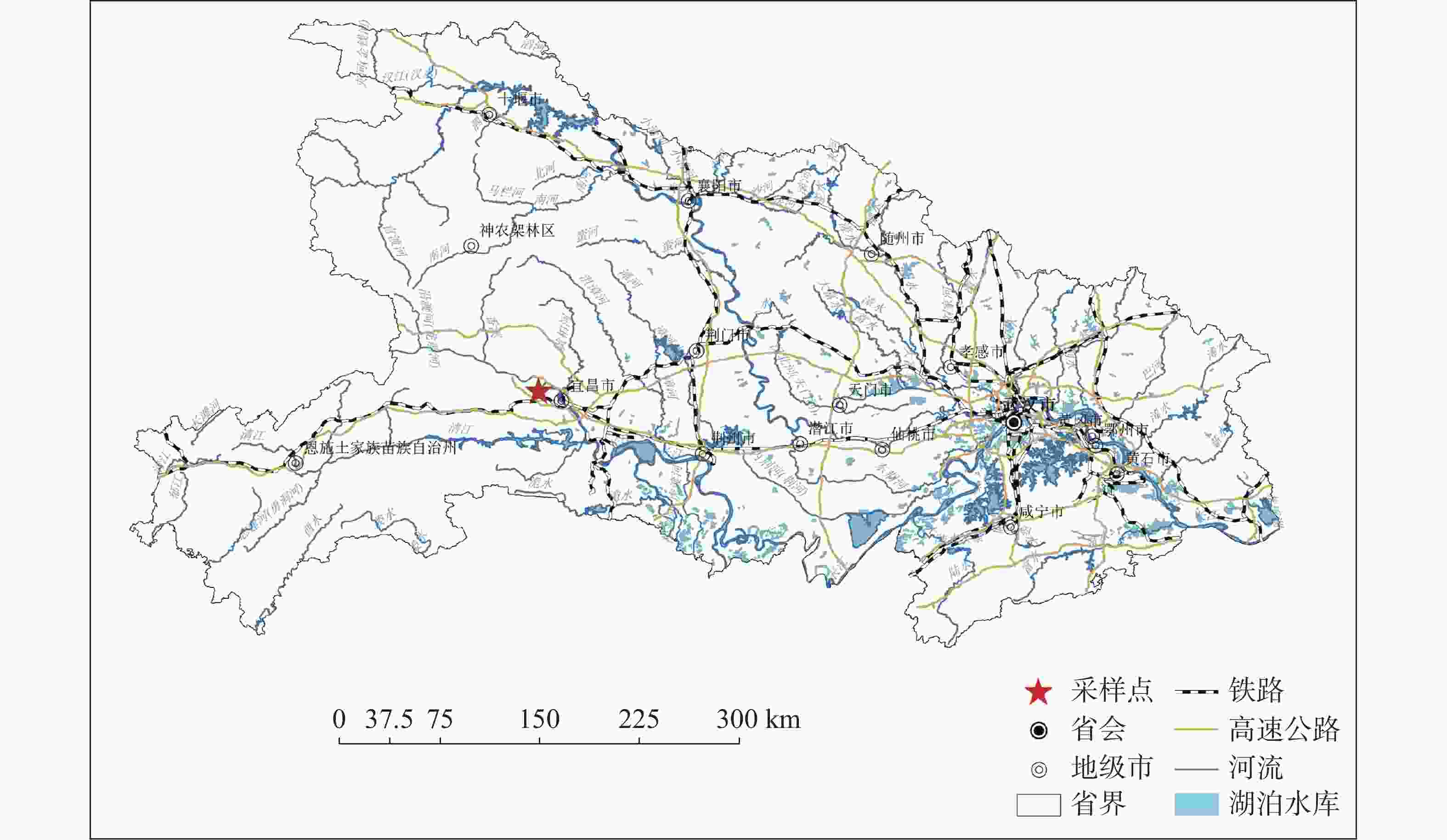
 下载:
下载:
